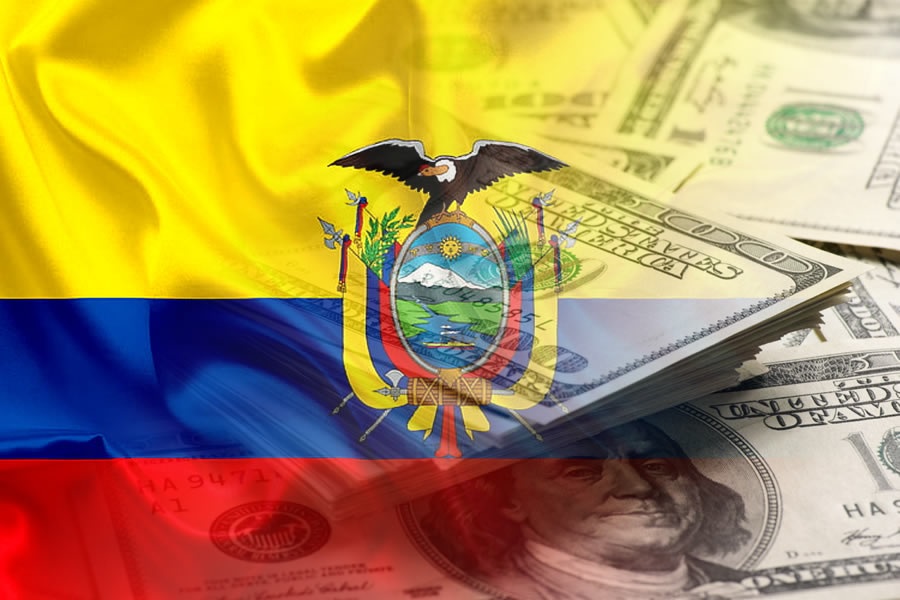RIO DE JANEIRO, BRAZIL – Interest rates in Ecuador have maintained a systematic downward behavior throughout 2021, and the trend continues in the first two months of 2022. According to data from the Central Bank of Ecuador (BCE), the rates of four segments: microcredit, productive, real estate, and consumer, were reduced between one and three points in this period.
In January 2021, microcredit was at 23.62%, and by December of the same year, it was at 20.89%. Meanwhile, in February 2022, it stood at 20.84%.
Productive loans have registered a downward trend since, in January 2021, they had been placed at 8.78%; by December, they were at 7.96%; and in February 2022, at 7.63%.

The rate for the real estate segment has also been reduced, from 9.59% to 9.03% between January and December 2021, reaching 8.98% in February of this year. The consumer rate went from 16.87% to 16.27% between January and December 2021, and in February of this year, it stood at 15.96%.
For Alberto Acosta Burneo, editor of Análisis Semanal, the new interest rate methodology applied since January 2022 – based on a resolution of the Monetary and Financial Policy Board – has not had a significant effect. The drop in interest rates occurred due to market conditions since this reduction occurred before the new methodology. He explains that the demand for credit stopped due to the effect of the pandemic, as well as production and consumption stopped; this behavior was contrary to that of deposits, which continued to rise. As a result, rates fell. In this sense, he says that the origin of the fall is not a positive reason since it is due to the weakness of demand.
Interest rates in Ecuador – a dollarized economy – operate under different rules than in other similar economies. From a compilation of data made by the Association of Banks of Ecuador (Asobanca), it can be established that interest rates in the country were the lowest when compared to those of the United States, El Salvador, and Panama.
Of the four dollarized economies analyzed, three use liberalized rates, while Ecuador, even with the new methodology established by the Financial Policy Board, sets them through ceilings.
According to the U.S. Federal Reserve, rates in the United States are determined by the market: supply and demand for credit and inflationary and growth expectations. In Panama, Decree-Law 9 allows banks to set lending and deposit rates freely. In El Salvador, on the other hand, they are tied to the behavior of international rates, that is, those of the United States.
Asobanca compiled the price of money, i.e., interest rates, in the consumer segment of these countries. For example, U.S. credit card interest rates can reach 34.99%. Banks in El Salvador can charge effective rates for consumer loans of between 18.71% and 38%, depending on the case. In Panama, credit cards have interest rates ranging from 29.33% to 29.97%. Meanwhile, in Ecuador, the current rate is 16.77%.
In this way, it contrasts with the discourse that is now being handled, for example, in some sectors of the Legislative, which claim that Ecuador’s rates are very high for being in dollarization. This position has led the Assembly members to deal these days in the Economic Regime Commission with the so-called Organic Law Reforming the Organic Monetary and Financial Code. The idea of the proponents is that interest rates should be further reduced.
In the current context of low demand and ceilings setting, the lowering of rates, which could seem like good news, becomes a problem. The fact is that when there are lower rates or rate ceilings, resources are directed to the safest and least risky clients and, therefore, lower operating costs. Thus, the logical result is the delivery of more credit, but to the same hands, i.e., the desired financial inclusion is not achieved.
Regarding the bill currently before the Assembly, Acosta Burneo believes that the legislature is wrong to set interest rates with lower ceilings, just as the Central Bank was wrong with the new methodology. In both cases, the aim is to lower the rate, but artificially doing so causes financial exclusion.
In short, those who require small amounts and do not have a credit history are left without access to credit. The only way to lower rates without generating financial exclusion is to increase the money supply. It happens through the entry of more foreign financial entities and, allowing the flow of capital to Ecuador, generating a good business environment, adopting international standards. With more supply, rates would fall, says Acosta.
In Ecuador, 49% of the population is excluded from the financial system: they have no access to credit. The same percentage is in the hands of the informal market, paying interest rates of up to 1,200% per annum, on average. Of this universe, 52.7% are women heads of household.
It was revealed by a study conducted by the credit bureau Equifax. This document also indicates that seven out of ten people believe they pay a rate of 10% or 20% per month, when in fact, they pay 103% per month or 1,238% per annum. People’s acceptance of this type of informal credit condition shows that it is not so much the rate that is important but timely access to credit.
In addition to the cost problem, security is also a risk for those who are subjected to the “chulco” (lending of money whose interest rate is higher than that established by official financial institutions) because if they do not pay, they receive threats to their integrity, in addition to additional charges.
On the other hand, in Ecuador, there is now a credit product for production, which is BanEcuador, at a 1% rate and a 30-year term. However, this product, which had managed to place some $ 13 million (as of March 8), will not generate an important change at the macroeconomic level, says Acosta.

